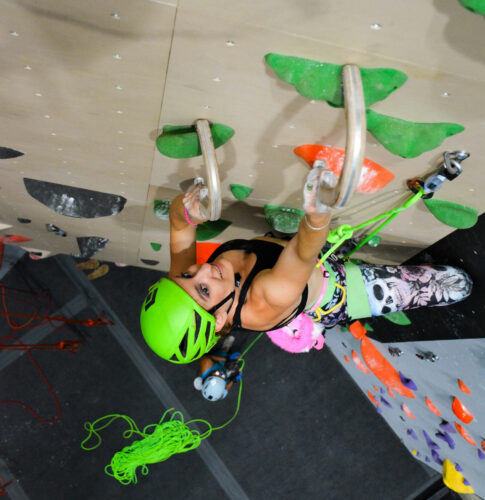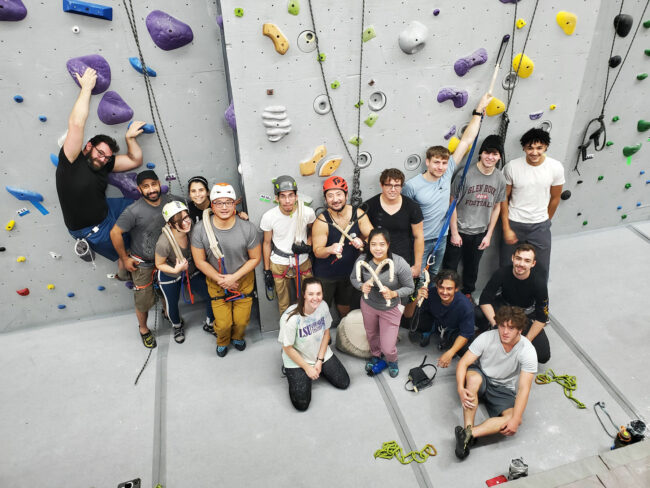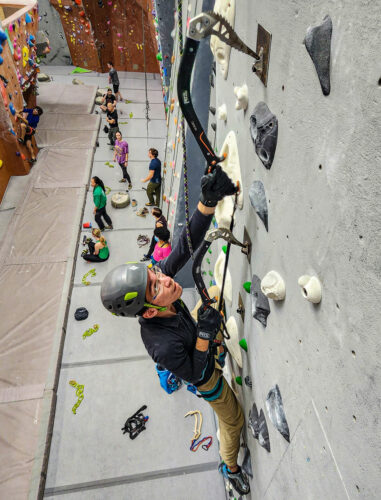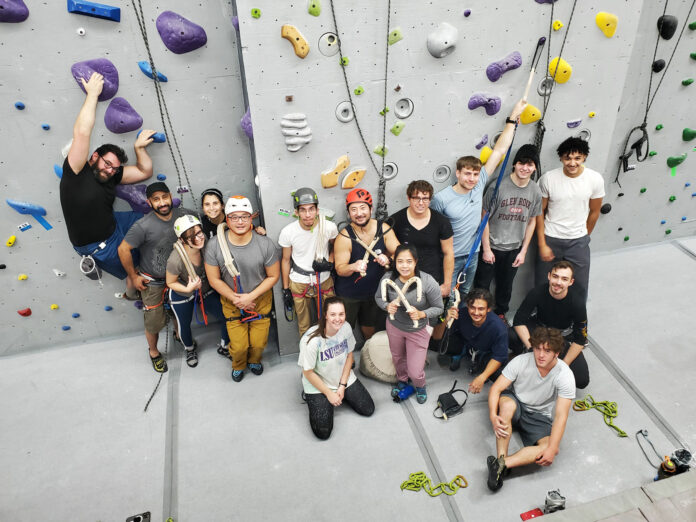
Climbing gyms of today are taking on the challenge of providing more training opportunities beyond indoor rock climbing. They are offering options for all their members―members who have a wide array of climbing interests, including in other disciplines. Let’s talk about how your gym can become the anchor for ice, mixed and drytool climbers within your community.
12 years ago, most gym owners looked at us like we were crazy for suggesting they offer training for ice climbing and drytooling indoors with purpose-built training tools. Even when we sold only DRY ICE Tools (still the safest sport specific option) the response was, “No, too dangerous.” This was fueled by resistance to change and a simple lack of knowledge and understanding of the activity.
But every year more gyms are realizing that they can cater to these climbers―and increase revenue and ultimately better serve the climbing community by doing so. Below are six ways you can start supporting ice climbing and drytooling at your climbing gym.
(See “A Note on Safety” at the end of this article for easily implemented risk mitigation plans.)
1. Allow Ice Climbing and Drytooling Training Gear
The simplest way your gym can welcome ice climbers is by allowing training tools inside your climbing facility. These tools include DRY ICE Evolutions, DRY ICE Tools, Ravens, and outdoor tools fitted with gym-friendly Escape Drytooling Picks.
You can open up more revenue streams by offering the tools for rent just like climbing shoes, and also selling ice climbing training gear within your climbing gym’s pro shop.
2. Host Training Clinics
Most climbing gyms host basic in-house training clinics for many aspects of rock climbing, from anchor building to bouldering technique. Gyms can now offer clinics focused on ice climbing and drytooling as well. Ice climbing has traditionally been viewed as a seasonal sport, generally taking place from November to April. But with the sharp increase in the growth of drytooling, ice climbing is now a year-round activity regardless of proximity to frozen waterfalls. Climbing gyms can partner with local guiding services to offer drytooling clinics or gym-to-ice series of clinics to help your ice climbing community get trained and stoked for the winter season.

3. Host a “DRY ICE” Night
The climbing community loves to gather for comps, films, and for seemingly off-beat things like crate stacking. Gyms can continue to build that community by hosting monthly DRY ICE training nights for ice climbers and drytoolers to come together. Consider making the events weekly during the fall/winter training season for even more customer engagement.
Think there’s no ice climbers around where you are? Think again. The largest segments of our sales are in places where there typically isn’t any ice, such as Florida, Tennessee, Georgia, Arizona, the Canadian Prairie, and Southern California. Put up a flyer and watch the winter climbers rise up, gather, and call your climbing gym their new home.
Take it one step further: Make it an entire day, themed event:
- Set special routes for ice climbing training tools. Route setting guidelines HERE.
- Show ice climbing inspired movies; “The Alpinist” and “Touching the Void” immediately jump to mind.
- Invite the leaders of the local ice climbing coalition to speak about ice etiquette, access, cold preparation, gear prep, training at your gym, etc.
4. Set Drytooling Routes
Using metal or stone holds, designate a section of the gym for drytooling with tethered outdoor tools. Now that you have a risk mitigation plan in place that requires helmets and tethers (see “A Note on Safety” below), your gym can become the anchor for the ice, mixed and drytool community in your area.

5. Set DRY ICE Routes
You can even keep it simple by setting standard climbing routes that can also be climbed with DRY ICE Evolutions or DRY ICE Tools. These gym-safe training options can be used on existing plastic or wood climbing holds, making them easy to integrate into your climbing gym landscape.
6. Host a Competition
Nothing gets people more amped up than a good comp. Even if you start small with a single evening event, the stoke will soar as the tools come out. Most drytooling comps are set as “Picks, No Kicks” events using outdoor tools with steel picks and climbing shoes instead of crampons.
A Note on Safety
Done correctly, managing the risk associated with training for ice climbing and drytooling is quite simple and effective. The two main methods used to mitigate risk are Tethers and Helmets.
Un-tethered tools can be a hazard. Tethering the tools mitigates that risk and prevents a tool from dropping. (Aside: What will happen is climbers continuing to drop personal items like cell phones…) In practice, when climbers fall, they will usually hold onto their tools. On the occasion they don’t, the tools will indeed swing about but never further than their own reach since tethers retract and shrink. The likelihood of the tools contacting another climber is extremely low. The tethered tools will fall downward, like the climber, and not out to the side, up, or out.
Un-helmeted heads can be a hazard. Since the climber is pulling the tools towards their center of gravity, the tools may contact the climber in the event a placement pops off a hold. Wearing a helmet mitigates that risk. Helmets prevent the back of the tool from hitting a climber in the head should the tool “pop” or slip off the hold. Tools popping off is simply part of the training experience, like feet slipping off holds. Belayers should also be encouraged to wear helmets.
There are differences when drytooling with ropes versus bouldering. Typically tethers are not used when bouldering, but bouldering with outdoor tools does require the use of helmets. When bouldering with training tools, it’s reasonable for climbers to set aside the helmet (at their own risk), but still recommended to use. In general, the risk and consequence of tool dropping is lower when bouldering since there is less height.
Another highly recommended and effective risk mitigation method is to create a separate drytooling area when there is dedicated drytooling with outdoor tools in use. When purpose-built indoor training tools such as DRY ICE Tools and DRY ICE Evolutions are used, it is not necessary to create a separate area, but tethers and helmets should still be used. For certain events, when a section of the gym is segmented off for drytooling and risk can be mitigated further, tethering might not be required.
Ultimately, the choice of risk mitigation method is at the discretion of the management of the climbing gym. These suggested measures offer guidance on how to open up more training opportunities, and bring in more customers, at your climbing gym.

At Furnace Industries, we are committed to promoting drytooling, ice and mixed climbing, supporting and building the drytooling and ice climbing community, and educating climbers to conserve the climbing environment. We have the gym-safe indoor ice climbing and drytooling training equipment to train right and train hard. #ItsAlwaysIceSeason







